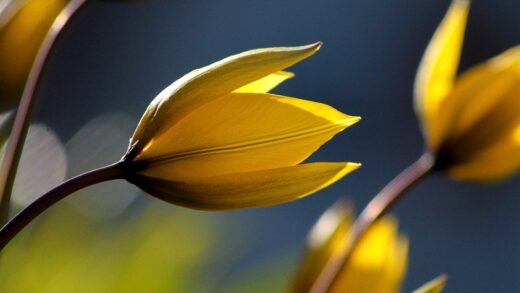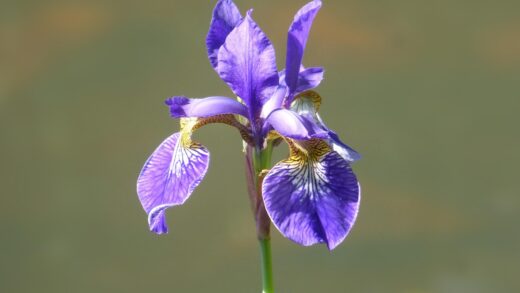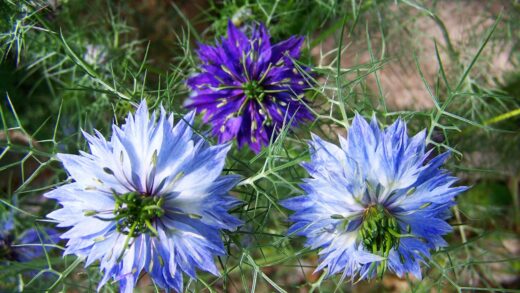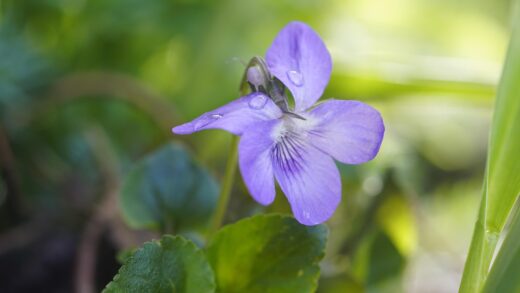Understanding the specific water requirements of the Balkan bellflower is fundamental to its successful cultivation and long-term health in any garden setting. This charming perennial, while possessing a notable degree of drought tolerance once established, thrives when provided with a consistent and well-managed moisture supply. The core principle of its irrigation is to maintain a balance, providing enough water to support vigorous growth and prolific flowering without creating the overly saturated, waterlogged conditions that it absolutely detests. Proper watering techniques not only sustain the plant but also encourage the development of a deep, resilient root system, making it more self-sufficient over time. Mastering the art of when and how to water this plant is a key skill that will be rewarded with a lush, cascading display of vibrant green foliage and a profusion of its signature star-shaped blooms.
The irrigation needs of this plant are heavily influenced by its stage of development. Newly planted specimens, whether they are from nursery pots, divisions, or recently rooted cuttings, are particularly vulnerable to drying out. During this critical establishment phase, the root system is still developing and has not yet penetrated deep into the soil profile. Therefore, it is essential to provide regular and consistent watering to keep the soil around the young roots evenly moist. This might mean watering every few days, especially in warm or windy weather, to prevent transplant shock and encourage rapid root growth. This initial period of attentive care is an investment in the plant’s future resilience.
Once the Balkan bellflower has become well-established, typically after its first full growing season, its water requirements will decrease significantly. An established plant develops a more extensive and deeper root system, enabling it to access moisture from a larger volume of soil. This is when its natural drought-tolerant characteristics become more apparent. During periods of average rainfall, an established plant may require little to no supplemental irrigation. However, it is a misconception to think it can be completely neglected; during prolonged hot and dry spells, it will still benefit greatly from a deep, occasional soaking to keep it looking its best and to support continuous flowering.
The type of soil in your garden plays a pivotal role in dictating the watering frequency. Sandy or gravelly soils drain very quickly and will require more frequent irrigation, as they do not retain moisture for long periods. In contrast, heavy clay soils hold onto water much more effectively, meaning the intervals between watering must be longer to allow the soil to partially dry out. It is crucial to avoid a rigid watering schedule and instead adapt your practices to the specific conditions of your garden. The most reliable method is always to check the soil moisture by hand before applying more water.
Signs of water stress
Observing your Balkan bellflower closely is the best way to determine its watering needs and to spot the early signs of water stress, both from under-watering and over-watering. When the plant is not receiving enough water, the first visible symptom is often a slight wilting of the leaves and stems, particularly during the hottest part of the day. The foliage may lose its turgidity and appear limp or floppy. If the drought stress continues, the leaves may start to turn yellow, beginning with the lower ones, and the edges can become brown and crispy. A lack of sufficient water will also significantly impact its flowering, leading to fewer blooms and a shorter flowering period.
More articles on this topic
Recognizing these signs early allows you to intervene before any lasting damage occurs. A thorough, deep watering will usually be enough to revive a wilting plant within a few hours. If you consistently notice the plant wilting during the day but recovering overnight, it is a clear indication that its water needs are not being met by rainfall alone and that your supplemental watering routine needs to be adjusted. An increase in watering frequency or volume during hot and dry periods is a simple but effective response to these symptoms of dehydration.
Conversely, over-watering can be even more detrimental to the Balkan bellflower than under-watering. The primary symptom of excessive moisture is often yellowing leaves, which can be confusingly similar to the signs of dehydration. However, with over-watering, the leaves may feel soft and limp rather than dry and crispy, and the yellowing can affect the entire plant, not just the lower foliage. The plant may also exhibit stunted growth and a general lack of vigor. This is because the waterlogged soil deprives the roots of oxygen, leading to their decay and an inability to absorb nutrients and water, effectively suffocating the plant.
The most serious consequence of over-watering is root rot, a fungal disease that thrives in anaerobic, soggy soil conditions. Once root rot has taken hold, it is very difficult to treat, and the plant will often wilt and die, even though the soil is wet. The key to avoiding this fatal issue lies in prevention. Always ensure the plant is in well-draining soil, and allow the top layer of soil to dry out between waterings. By learning to distinguish between the signs of too little and too much water, you can fine-tune your irrigation practices to provide the perfect amount of moisture for your plant to thrive.
Best watering techniques
The method you use to water your Balkan bellflower is just as important as the frequency and amount of water you provide. The most effective technique is to apply water slowly and deeply, directly at the base of the plant. This approach ensures that the water penetrates deep into the soil profile, reaching the entire root zone. Deep watering encourages the development of a strong, extensive root system that grows downwards in search of moisture, which in turn makes the plant more stable and drought-resilient. It is far more beneficial than light, frequent sprinklings that only wet the surface and encourage shallow, weak root growth.
More articles on this topic
Using a soaker hose or a drip irrigation system is an ideal way to deliver water efficiently and effectively. These systems release water slowly and directly onto the soil, minimizing runoff and water loss through evaporation. They also have the significant advantage of keeping the foliage dry. Wet leaves, especially for prolonged periods, can create a perfect environment for the development and spread of fungal diseases like powdery mildew, to which bellflowers can be susceptible. If you are watering by hand with a hose or watering can, use a gentle setting and aim the stream at the soil around the crown of the plant rather than spraying it over the top of the foliage.
The timing of your watering can also make a significant difference. The best time to water your plants is in the early morning. Watering at this time allows the plant to absorb the moisture and prepare for the heat of the day. It also ensures that any water that does splash onto the leaves has ample time to evaporate in the morning sun, reducing the risk of disease. Watering in the middle of a hot day is inefficient, as a large percentage of the water will be lost to evaporation before it can be absorbed by the roots. Evening watering, while better than midday, can sometimes be problematic in humid climates as the foliage may remain wet overnight, potentially encouraging fungal growth.
For Balkan bellflowers planted in containers or hanging baskets, the watering strategy needs to be adjusted. Soil in containers heats up and dries out much more quickly than garden soil. Therefore, potted plants will require more frequent watering, possibly even daily during the peak of summer. The principle of checking the soil moisture still applies; insert your finger into the pot, and if the top inch is dry, it is time to water. When you do water, continue until you see water starting to drain from the bottom of the pot, which ensures that the entire root ball has been thoroughly saturated.
Adapting to seasons
The water requirements of the Balkan bellflower are not static; they fluctuate significantly with the changing seasons. A responsive and adaptive watering strategy is essential for maintaining the plant’s health throughout the year. During the spring, as the plant emerges from dormancy and begins its period of active growth, its need for water will gradually increase. The combination of rising temperatures and the plant’s efforts to produce new foliage and flower buds demands a consistent supply of soil moisture. This is a critical time to monitor the plant and ensure it does not dry out, as this can stunt its growth and diminish its flowering potential.
Summer is the period of peak water demand, especially during hot and dry spells. The plant is in full bloom and is actively photosynthesizing, processes that require a significant amount of water. High temperatures also increase the rate of evaporation from the soil and transpiration from the leaves. During these months, you will need to be most vigilant with your watering, providing deep soakings whenever the top few inches of soil become dry. For established plants, a thorough watering once a week during a dry spell may be sufficient, but this will vary based on your specific climate and soil conditions.
As autumn arrives and the weather begins to cool, the plant’s growth rate slows down, and its water needs will naturally decrease. The days become shorter, temperatures drop, and rainfall may become more frequent. This is the time to begin gradually reducing your supplemental watering. Continuing to water as frequently as you did in the summer can lead to waterlogged soil, which is particularly dangerous as the plant prepares for winter dormancy. Allowing the soil to be slightly drier in the autumn can help harden off the plant and prepare it for the cold months ahead.
During the winter, the Balkan bellflower is dormant, and its water requirements are minimal. In most climates, natural precipitation in the form of rain or snow will provide more than enough moisture. It is crucial to avoid supplemental watering during this period unless you are experiencing an unusually dry and mild winter. Excess moisture in cold, dormant soil is a primary cause of crown and root rot, from which the plant may not recover. The focus during winter is to ensure the soil remains well-drained and is not allowed to become a soggy, frozen mass.
Special considerations
Beyond the general guidelines for watering, there are several special considerations to keep in mind to ensure your Balkan bellflower thrives. The first relates to plants grown in containers. As mentioned, the soil in pots and hanging baskets dries out much faster than garden soil. This is due to the limited volume of soil and the exposure of the container’s sides to sun and wind. Therefore, container-grown plants require a much more attentive watering schedule. It is also essential that any container used has adequate drainage holes to allow excess water to escape freely, preventing the roots from sitting in water.
Another consideration is the impact of mulch on soil moisture. Applying a layer of organic mulch, such as bark chips, shredded leaves, or compost, around the base of your Balkan bellflower can be highly beneficial. Mulch helps to conserve soil moisture by reducing evaporation from the surface. It also helps to regulate soil temperature, keeping the roots cooler in the summer and warmer in the winter. Furthermore, as the organic mulch breaks down, it improves the soil structure and fertility. However, be careful not to pile mulch directly against the crown of the plant, as this can trap moisture and potentially lead to rot.
The location of the plant within the garden can also create microclimates that affect water needs. A Balkan bellflower planted at the base of a thirsty tree or large shrub will face significant competition for water and may require more frequent irrigation than one planted in an open border. Similarly, a plant situated in a hot, sunny spot next to a south-facing wall or paved surface that reflects heat will dry out much faster than one in a cooler, partially shaded location. Being mindful of these microclimates and adjusting your watering practices accordingly is a hallmark of an experienced gardener.
Finally, consider the water quality itself. While the Balkan bellflower is not overly particular, most plants prefer rainwater over tap water. Tap water can sometimes be alkaline or contain chlorine and other chemicals that can accumulate in the soil over time. If possible, collecting and using rainwater for irrigation is an excellent practice for the overall health of your garden. If you must use tap water, allowing it to sit in an open container for 24 hours can help some of the chlorine to dissipate before you apply it to your plants.


















